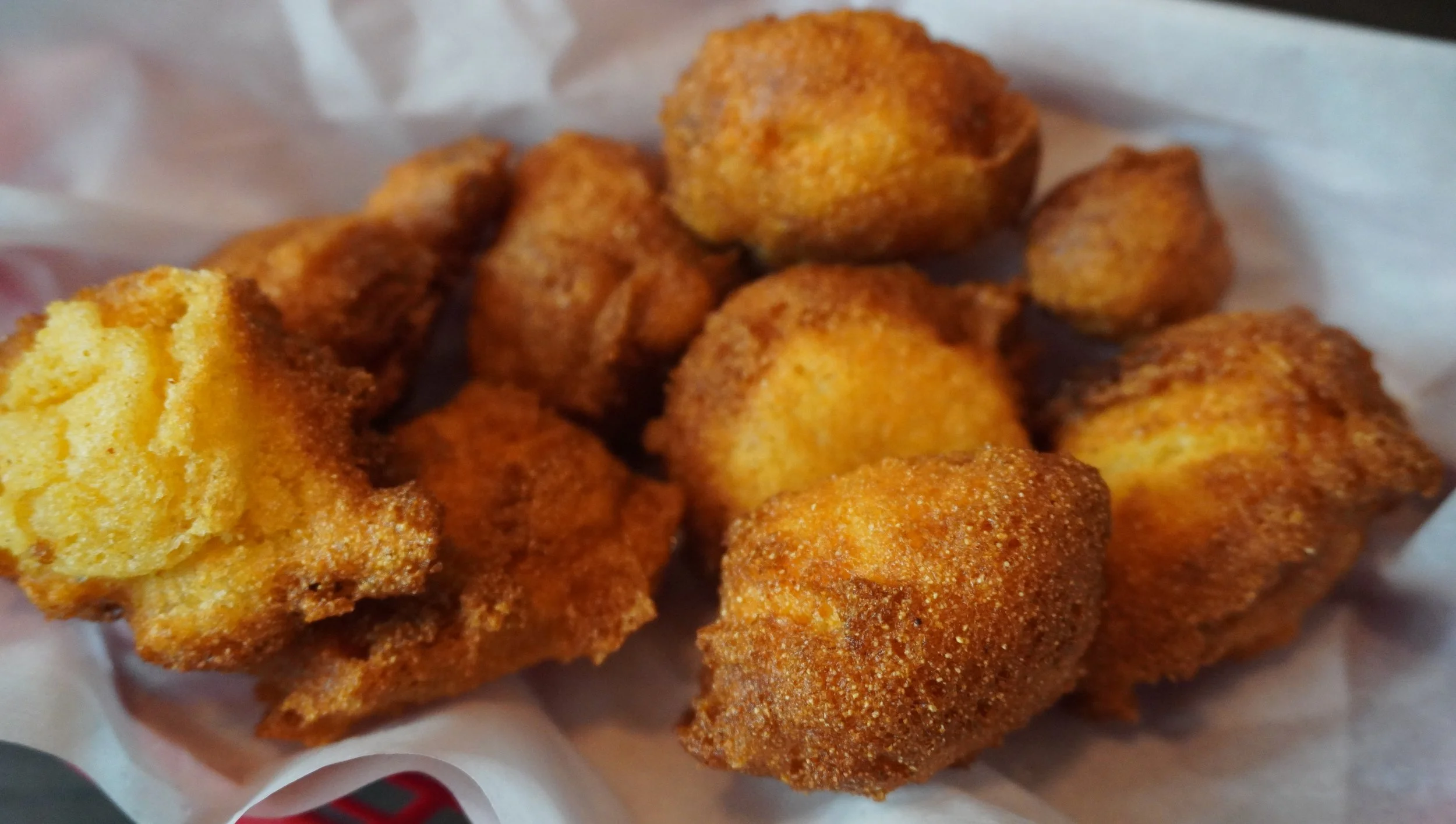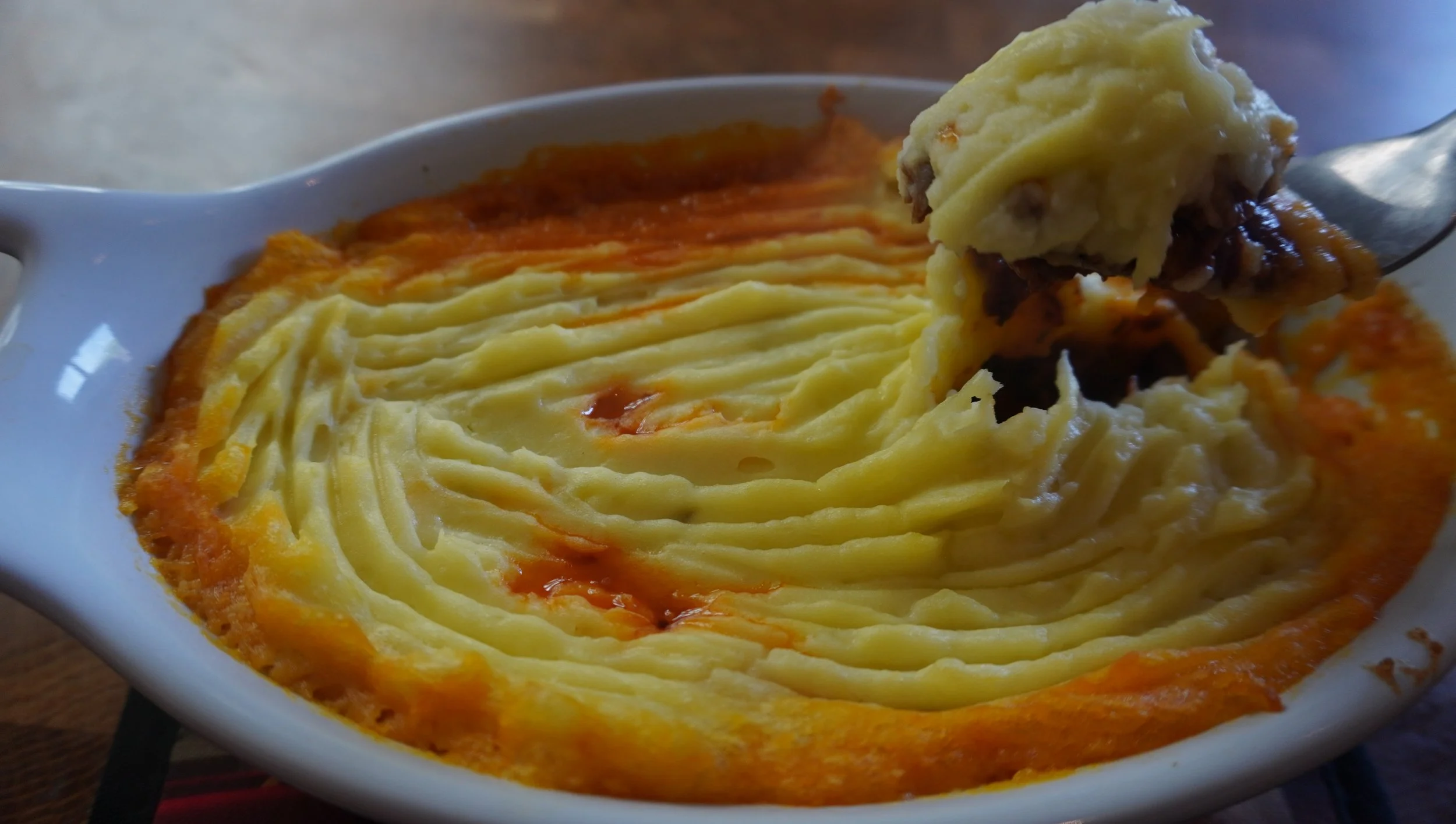This Food in History #25 Hushpuppies
Hello and welcome to another episode of This Food in History! Today we’ll be moseying back to the American South to look at a side dish you’ll find at any fish fry! Hushpuppies.
Like many yankees, I grew up with the Long John Silver hushpuppies that came with every order if memory serves. I’d make sure I ordered extra when I was old enough to grab them on my own. I loved the savory fried dough and wanted it more than the popcorn shrimp I would get as an excuse to get hushpuppies. So where do these dough balls come from?
Hush puppies have a lot of famous stories, and the famous stories are also famously considered wrong it seems. Let’s take a peak at each!
We’ll travel to Louisiana in the settlement of Nouvelle Orleans, the precursor to New Orleans. We’re landing in 1727. A group of Ursuline nuns have come from France. While in Nouvelle Orleans, they become acquainted with local Native American tribes, most likely the Chitimacha. It could also have been one of the other three federally recognized tribes in the area, the Coushatta, the Jena Band, or the Tunica-Biloxi. From the tribes, they learned about corn meal and to make corn patties named croquettes de maise. These could have been a precursor to hushpuppies.
The name was said to be given in another legend that an African cook in Atlanta, Georgia was frying a batch of catfish and croquettes. A puppy began to howl, and so she gave it a plate saying hush, puppy and the name stuck. A creole cook, also has a similar legend.
Hunters and trappers have claimed the name, saying it was to keep the dogs quiet while out on trails and sitting around campfires. This same story is also repeated for confederate soldiers to keep dogs quiet when the steps of union soldiers were heard. Keeping with the dog theme, we have yet another story that escaped slaves would use the fried dough to silence dogs hunting them. This story gets debunked quickly though, as being near enough for a dog to bark was to be caught and no time to silence the dogs. Though if slaves had made hushpuppies, it likely came from their dish called ‘mealie pap’.
The north also tries to get in on the dog story with a 1939 piece in the Capital Times of Madison, Wisconsin. They state a Florida cook was trying to silence some dogs while frying fish in the back yard and whipped up the corn fritters and gave them to the pups to silence them. She then tried them for herself and liked it too.
To deviate from dogs, we have a variant made from salamanders instead of corn meal also known as mud puppies, water dogs, or water puppies that were deep fried. It was said to be nicknamed hushpuppies because respectable southern wives should not be caught eating such a lowly meal by her neighbors.
However, the term hushpuppy seems to predate all these American stories. The British already had the term in the 18th century to describe the act of covering up illegal activity by silencing someone. In 1738, a story goes that corrupt officials boarded a boat of smugglers and played a “game of hush puppy” to waste time and give smugglers a chance to hide the goods.
Some have also found another use for the term besides the deep fried treat, a gravy. One found it in an 1879 account in the San Antonio Herald to describe a grisly moment with Jim Gillet of Lampass Springs, who had taken a scalp from a Native American. It wasn’t an ingredient but was used disrespectfully while enjoying a “hush puppy gravy.” Another account in 1899 Spanish-American war story, has a soldier provide a comment about breakfast that included hushpuppy and a 1939 American Speech journal that defines hush puppy as ham gravy.
So now we have a lot of stories and a few uses of the word, but what really is the origin? Let’s take a moment and say that while I’ll be describing the stories considered most likely true, we shouldn’t fully discount the whimsy of the others. This is to honor the quote of Regina Charboneau who wrote in the Atlantic: "When it comes to the history of Southern food, it is often difficult to separate fact from fiction, but with many Southern dishes the separating is not worth it, since the folklore adds a lot of charm and allure."
The most credible story that we have is about the invention of red horse bread by a freed slave Romeo “Romy” Govan. A famous culinarian, Govan was born enslaved in 1845 in South Carolina. He was freed after the Civil War and settled with his wife, Silvia Jennings, near the Edisto River near Cannon's Bridge, about five miles from the town of Bamberg. They would stay here the rest of their lives. To set the scene, let’s look at the quote from Augusta Chronicle in 1903 for this “famous cook of the old regime.”
“There he operated his “club house”, a frame structure with a neatly swept yard where guests came almost every day during fishing season to feast on "fish of every kind, prepared in every way...and the once eaten, never-to-be-forgotten 'red horse bread.'"
Red horse was a fish that was abundant in the South Carolina rivers and used in fish fries. Govan’s fish fries had the fried fish and entertainment that drew in prominent members of the white community who tipped well enough for the couple to buy the house and land. One newspaper is quoted in stating Govan was: “known to every sportsman worthy of the name in South Carolina, he who has entertained governors, senators, and statesmen along these famous banks."
Alongside his fish he served this red horse bread. The corn meal globs were fried in the grease with the fish and served on the side giving it more flavor. The globs were made by mixing cornmeal, water, salt, and eggs and spoonfuls into that hot lard frying the fish.
Robert F. Moss, a food writer and scholar, noted not only the connection with Red Horse bread and Romy Govan but also that in 1940, a columnist in Augusta Chronicle also noted that “Red Horse cornbread is often called Hush Puppies on the Georgia side of the Savannah River” This name had been in use there since 1927 when Macon Telegraph reported a men’s bible class in First Methodist Church held a fish fry and the chairman Roscoe Rouse would cook the fish and hushpuppies. Moss also notes that in the 1930s hushpuppies referred to a delicacy served at political gatherings in Tennessee.
Once we start looking at the 1930s and 1940s and on we see explosions of reports from all over.
In 1934, a Pennsylvania Sunday Courier posted a travel story about Central Florida and having hushpuppies at Mr. Joe Brown’s camp on Lake Harris.
American Cookier, American Legion Magazine, and Boy’s Life with National Scout Commission Dan Beard using his monthly column about a fishing trip in Key West where he had a famous recipe by Mrs. J. G. Cooper for hushpuppies.
We also have other names for similar dishes like wampus out of Florida, red devils, and three finger bread in Georgia. Puffles and mush-puffles are another name found in history by Moss. Some also call them corn dodgers.
Then in 1948, Walter Thompson from Swansboro North Carolina made a ready-mix of cornmeal, flour, and seasoning in pasteboard tubes and sold it nationwide as Thompson’s Fireside Hushpuppy Mix. A user only needed to add water.
So with hush puppies making their way around the states, what about internationally?
Jamaica has a version of fried bread dumplings known as festivals. They’re oblong in shape, made from flour, cornmeal, salt, and sugar. They’re more sweet than the hushpuppies of the south and served with jerked meats.
Puerto Rico also has a version called sorullos, and sorulitos for smaller versions. Sugar is added to cornmeal and they are sometimes stuffed with cheddar cheese, cream cheese, and guava. You serve them with coffee and some dipping sauce from guava, or fry sauce.
In the end, hushpuppies have a varied history. The name is most hotly debated in origins, but the dish itself grew from Native American customs until they found their way next to fried fish and more foods all over the country. Romy Govan definitely is the most famous of potential inventors even if plenty of other locations host their own myths. What could be more southern whimsy though than a food with rich oral history and no clear origins but beloved most by those Proud southerners?
This has been This Food in History, Thank you for watching, I’m Sofia, please like and subscribe for more!
Cites
https://www.robertfmoss.com/features/The-True-Story-of-Hushpuppies-a-Genuine-Carolina-Treat
https://www.snopes.com/articles/465369/hush-puppies-cornmeal-slaves-dogs/
https://professortorberts.com/2024/05/the-legend-of-the-hush-puppy/
https://www.southernliving.com/food/holidays-occasions/new-orleans-mardi-gras-recipes
https://www.mashed.com/243892/the-true-origin-of-hushpuppies/
https://www.foodnetwork.com/how-to/packages/food-network-essentials/what-are-hush-puppies
https://nsdbsa.org/daniel-carter-beard-first-national-scout-commissioner/



